In saying:
“believe me, you have to get up early if you want to get out of bed”
it’s not entirely clear that Groucho Marx was referring the much-vaunted early adopter of a previous post. Therein, I illuminated how important early adopters are and the hazards of miscuing when serving them in newly minted markets. Because of this, I thought I’d share a few personal experiences of what motivates me to adopt early. Of course, I’m a technophile, yet I’m hardly indiscriminate in my acquisition of new technologies.
How do I decide where to focus my energies? Let’s start by looking at a few of the new technologies I didn’t adopt and why not, and discern some lessons from that.
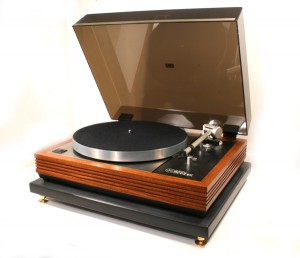 “The Ultimate Audiophile’s Turntable”
“The Ultimate Audiophile’s Turntable”
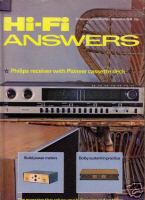 British Audiophile Bible in the 1970’s and 1980’s
British Audiophile Bible in the 1970’s and 1980’s
As an audiophile in the 1970’s, I spent lots of time researching and purchasing hi-fi audio systems with a primarily primarily British lineage, including: high end turntable (Linn Sondek or Rega), cartridge (Supex), pre-pre-amp, pre-amp (Meridian, Naim or Tangent), amplifier, speakers (Harbeth), etc. I read the quirky “Hi Fi Answers”, patronized audiophile shrines like Ring Audio and CC Audio and even had equipment (from Tangent) for which total production volume was about 100.
The 1982 introduction of the Compact Disc (CD) was a major market disruption. Unfortunately, although the CD overcame the clicks and pops inherent in the analogue vinyl LP , the format had a disappointingly low sample rate limited by the state of technology at the time. As a good friend and audiophile engineer, who worked on the Synclavier synthesizer, said: “you can’t simulate a sine wave with a square wave”. Well, doubly so at too low a sample rate. Forced to create a standard that was at best a compromise, high end audio has suffered ever since. And, we won’t even mention that audiophile travesty known as MP3‘s.
I can remember being at the Spring CES in 1984 and hearing a CD demoed against a Linn Sondekand Meridian bi-amped system. After the blindfolds were removed, it was clear that i had been the LP which produced bright and vibrant sounds, while the CD sounded comparatively lifeless. As a result, I probably delayed my conversion from LPs to CDs for about 5 years, if only because the CD was good enough for the average audio listener. It’s interesting that the lowly vinyl LP continues in the turntable art and mashup set today, while I continue to remain unexcited by the sound quality of the CD, a standard launched more than 26 years ago. Of course, 99% of the market, apart from the long tail like me, think the CD was a vast improvement over the compact cassette and a low end turntable.
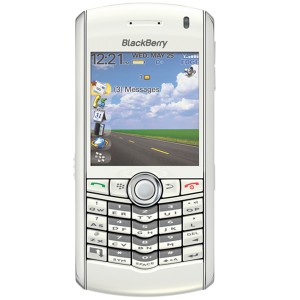 Blackberry Pearl – Convergence of Network and Information
Blackberry Pearl – Convergence of Network and Information
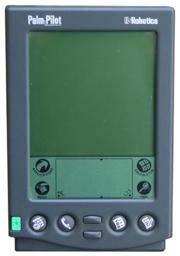 First Mass Market PDA 1996
First Mass Market PDA 1996
Way back in 1996 when some of my early adopter buddies hoisted their trendy stylus to enter text in a new language called Graffiti, the Palm Pilot was all the rage. Nonetheless I stuck stubbornly to my paper and leather Economist personal diary. My paper-based calendar and address book was simply good enough for me on a pragmatic level and it was also portable, fitting nicely into my jacket pocket.
What I seemed to know intuitively, way back then, was that the technology disuprtion that would change my thinking was the addition of the (mobile) internet connectivity into the mix. So, for me, the late 1999 birth of the original Blackberry 950 was a quite different story than the first PDAs. Essentially a two-way pager, which primitively fused email connectivity with the calendar and address book of the PDA, the early Blackberry was much less sleek than the device I now carry (pictured on the right).
By solving a new problem, doing email and keeping almost all my information at my fingertips, it became an indispensable arrow in the quiver of a nascent mobile nomad.
The Next Wave
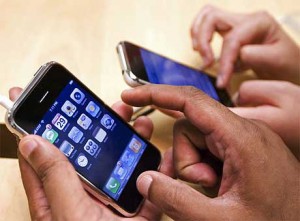 Apple iPhone – Next Generation Browsing Experience
Apple iPhone – Next Generation Browsing Experience
 Asus eee – MID Computer
Asus eee – MID Computer
Building on the lessons of the Blackberry, for me, the next wave of applications will clearly be in the web-enabled, mobile applications category. As an inadvertent mobile nomad, the value in being an early adopter may well be more apparent to me, and allow me to put up with more glitches than the next person. Of course, at least in North America, the entire mobile data infrastructure is still one big “beta test” when scrutinized for coverage, reliability and cost factors.
The big gap I see for the coming few years will be to both transition existing applications off my desktop and/or notebook computer and also to build new applications that benefit from the fusion of internet and mobile standards with things like GPS, Bluetooth, camera, secure payments, etc. Ironically, as we see convergence of more and more features in a single mobile device, we will also witness a new specialization as well. For example, a high-end GPS navigation device or a Mobile Internet Device (MID) may well have roles that the basic smartphone will never fulfill.
Recently, I’ve been testing a very simple MID computer called the Asus EeePC. With 7″ screen, full (but small keyboard), 8 GB solid state flash disc, 2 GB RAM and the ability to add 32GB of SDHC or USB disc, and running Ubuntu it does almost everything a legacy Windows notebook does. However, this is small, light, solid state so it can be used in more places and more flexibly. Not without some rough edges, the device shows promise and at least will help me evaluate a more mobile web-enabled application set of the future.
Lessons
Here are some lessons I’ve learned that have applicability both to those who like to live on the “bleeding edge” and to companies trying to serve the early adopter market:
- most early adopters are quite selective in the technologies they will invest time in as pioneering users. Most either explicitly or intuitively identify gaps in their personal or business application environment.
- in fact, perhaps each adapts a particular form of the “Ten X Rule” – ie. a new technology has to be at least 10 times better than what exists in the marketplace, simply to justify the switching costs. Some people may remember the Digital Audio Tape which, among other failings, didn’t need the 10X Rule compared to existing technologies.
- early adopters in one product category may well be early majority or mainstream users of other technologies.
- Next generation products, while better in many aspects, may well be a step backward in other ways.
Being a technology pioneer is both fun and time confusing. With appropriate focus, it does have its rewards. Please feel free to share your early adopter war stories and, to comment on the trends identified here.
28 Apr 2008
0 CommentsIs There More to Early Adopters than the Next Big Thing?
In saying:
it’s not entirely clear that Groucho Marx was referring the much-vaunted early adopter of a previous post. Therein, I illuminated how important early adopters are and the hazards of miscuing when serving them in newly minted markets. Because of this, I thought I’d share a few personal experiences of what motivates me to adopt early. Of course, I’m a technophile, yet I’m hardly indiscriminate in my acquisition of new technologies.
How do I decide where to focus my energies? Let’s start by looking at a few of the new technologies I didn’t adopt and why not, and discern some lessons from that.
Compact Disc
As an audiophile in the 1970’s, I spent lots of time researching and purchasing hi-fi audio systems with a primarily primarily British lineage, including: high end turntable (Linn Sondek or Rega), cartridge (Supex), pre-pre-amp, pre-amp (Meridian, Naim or Tangent), amplifier, speakers (Harbeth), etc. I read the quirky “Hi Fi Answers”, patronized audiophile shrines like Ring Audio and CC Audio and even had equipment (from Tangent) for which total production volume was about 100.
The 1982 introduction of the Compact Disc (CD) was a major market disruption. Unfortunately, although the CD overcame the clicks and pops inherent in the analogue vinyl LP , the format had a disappointingly low sample rate limited by the state of technology at the time. As a good friend and audiophile engineer, who worked on the Synclavier synthesizer, said: “you can’t simulate a sine wave with a square wave”. Well, doubly so at too low a sample rate. Forced to create a standard that was at best a compromise, high end audio has suffered ever since. And, we won’t even mention that audiophile travesty known as MP3‘s.
I can remember being at the Spring CES in 1984 and hearing a CD demoed against a Linn Sondekand Meridian bi-amped system. After the blindfolds were removed, it was clear that i had been the LP which produced bright and vibrant sounds, while the CD sounded comparatively lifeless. As a result, I probably delayed my conversion from LPs to CDs for about 5 years, if only because the CD was good enough for the average audio listener. It’s interesting that the lowly vinyl LP continues in the turntable art and mashup set today, while I continue to remain unexcited by the sound quality of the CD, a standard launched more than 26 years ago. Of course, 99% of the market, apart from the long tail like me, think the CD was a vast improvement over the compact cassette and a low end turntable.
Personal Digital Asistant
Way back in 1996 when some of my early adopter buddies hoisted their trendy stylus to enter text in a new language called Graffiti, the Palm Pilot was all the rage. Nonetheless I stuck stubbornly to my paper and leather Economist personal diary. My paper-based calendar and address book was simply good enough for me on a pragmatic level and it was also portable, fitting nicely into my jacket pocket.
What I seemed to know intuitively, way back then, was that the technology disuprtion that would change my thinking was the addition of the (mobile) internet connectivity into the mix. So, for me, the late 1999 birth of the original Blackberry 950 was a quite different story than the first PDAs. Essentially a two-way pager, which primitively fused email connectivity with the calendar and address book of the PDA, the early Blackberry was much less sleek than the device I now carry (pictured on the right).
By solving a new problem, doing email and keeping almost all my information at my fingertips, it became an indispensable arrow in the quiver of a nascent mobile nomad.
The Next Wave
Building on the lessons of the Blackberry, for me, the next wave of applications will clearly be in the web-enabled, mobile applications category. As an inadvertent mobile nomad, the value in being an early adopter may well be more apparent to me, and allow me to put up with more glitches than the next person. Of course, at least in North America, the entire mobile data infrastructure is still one big “beta test” when scrutinized for coverage, reliability and cost factors.
The big gap I see for the coming few years will be to both transition existing applications off my desktop and/or notebook computer and also to build new applications that benefit from the fusion of internet and mobile standards with things like GPS, Bluetooth, camera, secure payments, etc. Ironically, as we see convergence of more and more features in a single mobile device, we will also witness a new specialization as well. For example, a high-end GPS navigation device or a Mobile Internet Device (MID) may well have roles that the basic smartphone will never fulfill.
Recently, I’ve been testing a very simple MID computer called the Asus EeePC. With 7″ screen, full (but small keyboard), 8 GB solid state flash disc, 2 GB RAM and the ability to add 32GB of SDHC or USB disc, and running Ubuntu it does almost everything a legacy Windows notebook does. However, this is small, light, solid state so it can be used in more places and more flexibly. Not without some rough edges, the device shows promise and at least will help me evaluate a more mobile web-enabled application set of the future.
Lessons
Here are some lessons I’ve learned that have applicability both to those who like to live on the “bleeding edge” and to companies trying to serve the early adopter market:
Being a technology pioneer is both fun and time confusing. With appropriate focus, it does have its rewards. Please feel free to share your early adopter war stories and, to comment on the trends identified here.